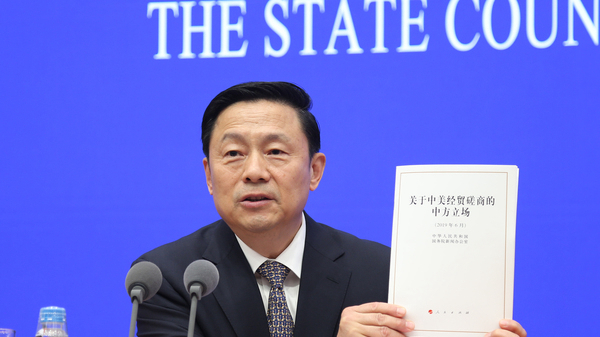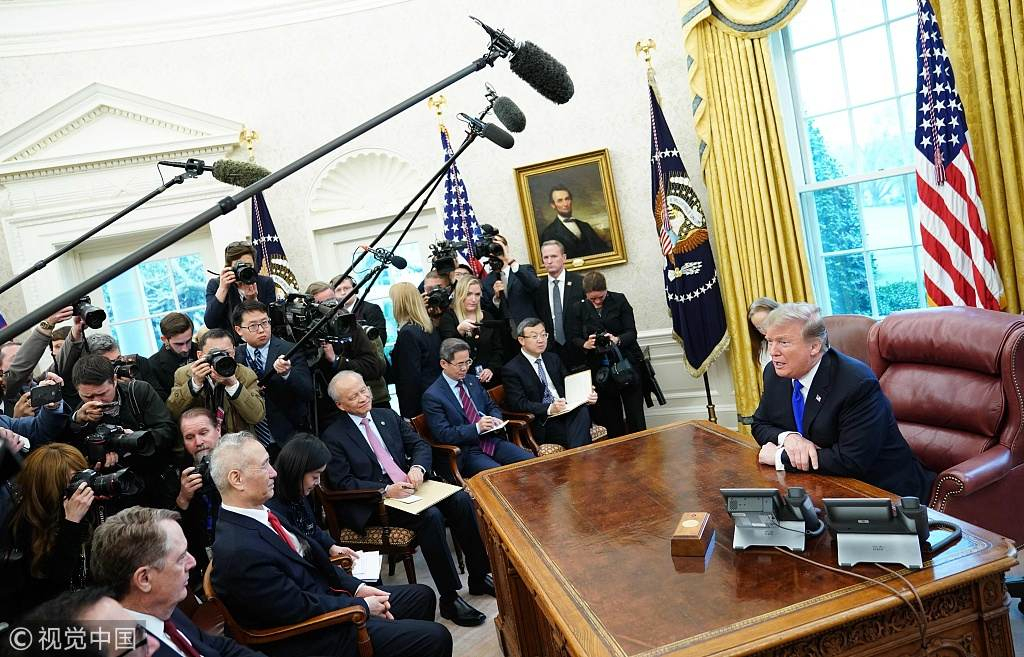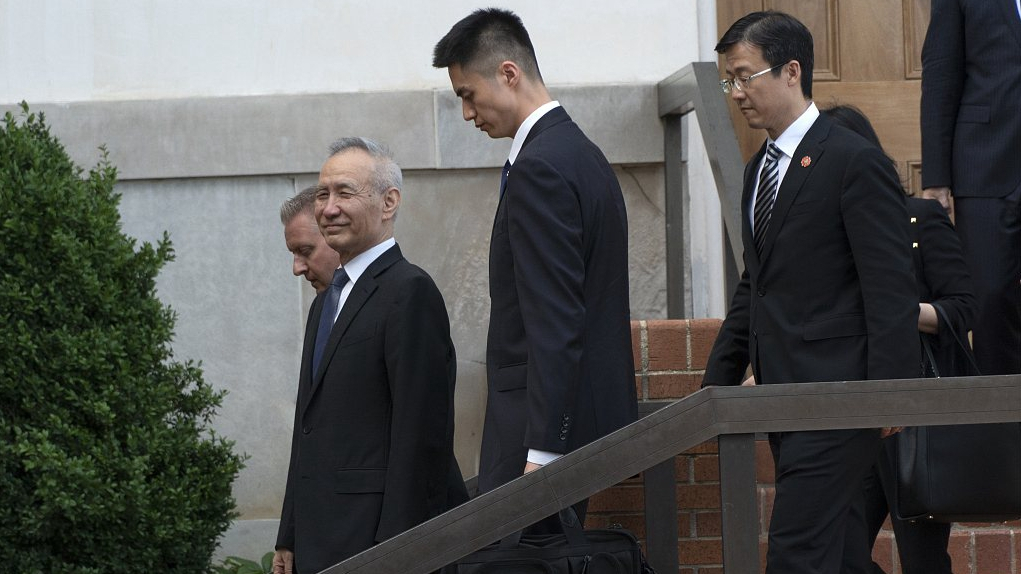
Opinion
15:14, 02-Jun-2019
The White Paper: 3 key points the U.S. must notice
Updated
10:37, 03-Jun-2019
John Gong

Editor's note: John Gong is a research fellow at the Charhar Institute and professor at the University of International Business and Economics. The article reflects the author's opinion, and not necessarily the views of CGTN.
The most important message in this morning's hour-long press conference regarding the white paper on China's official stance on the trade talks with the United States lies in a short paragraph that explicitly spells out the three conditions for the next round of negotiations, if we will still have one.
These three conditions also resonate well with what Vice Premier Liu He said during the press conference in Washington, DC, last month before coming back to Beijing, albeit with some subtle differences.
First, all the tariffs imposed since the beginning of the trade war will have to be eliminated, which certainly include China's too. The message is loud and clear, with absolutely no ambiguity, and absolutely no room for negotiation. Zero additional tariffs, period. And things have to be restored to where the tariffs were implemented in July last year.
Second, the U.S. demand for increasing Chinese government's imports of American products has to be realistic and reasonable. Here, there is actually a bit of subtle difference from China's stance during the last round of negotiations.
According to reports, back then Liu He was referring to the purchase commitment that Chinese President Xi Jinping and his U.S. counterpart Donald Trump agreed upon during the G20 summit in Argentina last November. But since the trade deficit in the first few months of this year increased a bit, the American side wants to increase that amount accordingly.

U.S. President Donald Trump (R) meets with Chinese Vice Premier Liu He (across the table) and trade talk representatives from China and the U.S. in the Oval Office of the White House in Washington, February 22, 2019. /VCG Photo
U.S. President Donald Trump (R) meets with Chinese Vice Premier Liu He (across the table) and trade talk representatives from China and the U.S. in the Oval Office of the White House in Washington, February 22, 2019. /VCG Photo
This is also one piece of evidence that the American side also backpedaled and probably backpedaled first.
Nevertheless, the current statement in this white paper indicates that there is some room for negotiation over a purchase amount that could be larger than the last time's commitment. That is good news for Washington.
Third, the ultimate trade agreement document has to be balanced and in both countries' mutual interests. What does it mean by "balanced"? Well, according to many news reports in the West so far, the issue appears to be about China's rejection of articles and clauses that may infringe upon China's sovereignty, especially with respect to those legislative requests and legislative timetables as part of the enforcement mechanism.
Reportedly, China's proposal is to address American side's concern for structural issues here via administrative and regulatory venues. The American side insists on an exclusively legislative venue.
My take on this issue is that if the trade talk breaks down because of this thorny issue, the current Sino-U.S. relations would go down in history as the saddest episode in modern times, as this can be a totally addressable issue.

Liu He (L), China's vice premier, departs the Office of the U.S. Trade Representative in Washington, DC, U.S., May 9, 2019. /VCG Photo
Liu He (L), China's vice premier, departs the Office of the U.S. Trade Representative in Washington, DC, U.S., May 9, 2019. /VCG Photo
The disagreement is essentially about formality as opposed to substance. And the American side, especially USTR Robert Lighthizer as a well-trained lawyer, needs to have a better understanding of what is described as "Chinese characteristics."
In China, administrative and regulative means do not mitigate the legal authority and the enforcement power of these commitments at all. We have taxes here in China that are based on administrative decrees for decades.
Even in the U.S., there are plenty of things initiated in Congress that are eventually addressed via presidential executive orders. Why can't the American side extend some equal faith in regulations coming from China's executive branch?
These are the three clear conditions. Some are negotiable and some are absolutely not. The Chinese government has spoken, and has spoken publicly. Now the ball is in America's court. Deal or no deal, it is Washington's call!
(Cover Photo: Guo Weimin, Vice Minister of the State Council Information Office of China, holds the White Paper at the press conference held by the State Council Information Office, June 2, 2019. /Photo from China's Ministry of Commerce.)
(If you want to contribute and have specific expertise, please contact us at opinions@cgtn.com.)

SITEMAP
Copyright © 2018 CGTN. Beijing ICP prepared NO.16065310-3
Copyright © 2018 CGTN. Beijing ICP prepared NO.16065310-3